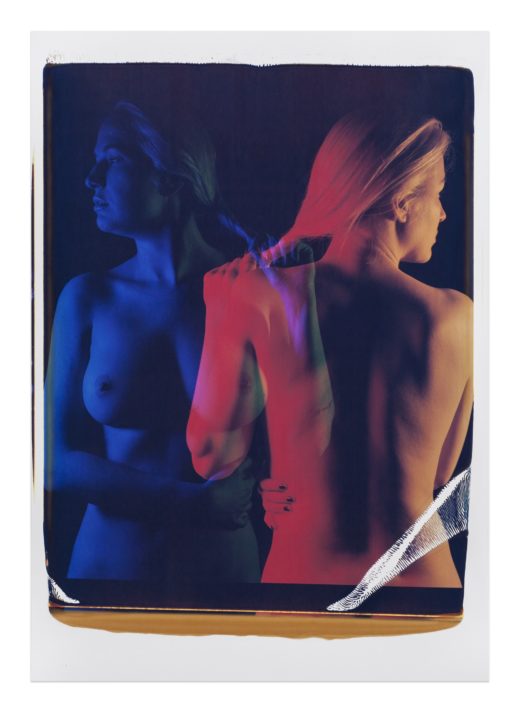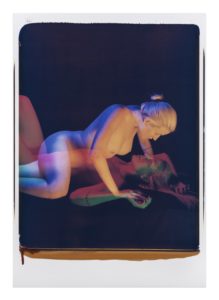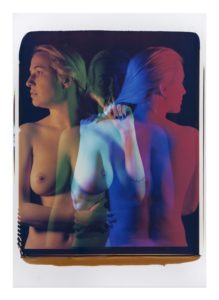- Midnight Thrift

- A New Day Has Come: A Review of Radical Hope: Letters of Love and Dissent in Dangerous Times
Natalie White: A Muse Me
Kristin Adsit
 Natalie White, Entanglement is a Fragile Thing, 2015. Dye diffusion transfer print (Polaroid), 30 x 21 inches. Courtesy Bill Brady Gallery, Miami
Natalie White, Entanglement is a Fragile Thing, 2015. Dye diffusion transfer print (Polaroid), 30 x 21 inches. Courtesy Bill Brady Gallery, Miami
Bill Brady Gallery
April 7, 2017 – May 13, 2017
As a brand, Polaroid has come to represent a particular moment of retro-futurism. A tangible, material predecessor of the smartphone camera, the Polaroid allowed users for the first time to capture and reveal moments from daily life in a matter of minutes. The 20 x 24 format in particular comes with a long and rich history of artist collaborations since seven of the oversized cameras were created in 1978. Notable users have included Barbara Kasten, Julian Schnabel, Mary Ellen Mark, and Chuck Close. Both Mark and Close have used the medium to capture unedited, hyper-realistic portraits of United States Presidents (Bill Clinton, Barack Obama) and Hollywood celebrities for major magazines (New York, Vanity Fair), among other projects.

Natalie White, Similar State, 2015. Dye diffusion transfer print (Polaroid), 30 x 21 inches. Courtesy Bill Brady Gallery, Miami
In front of the camera, White remains elusive. Her face is often in profile or looking away from the viewer, sometimes fully lost in shadow. Even when she faces the camera head-on, her eyes and mouth are searching, not emoting or expressive. Her tattoo is visible, but not legible; she holds her arm across her stomach in a self-protective gesture. Instead, self-expression enters into the works through decisions made by White as the artist directing the camera. As the figures are overlaid, they sometimes seem to touch one another, appearing to pull each other’s hair or hold hands. The multiple exposures also emphasize different areas on the other figure, such as in Similar State (2015), in which the forearm of the top figure highlights the eyes of the bottom figure. In these compositional relationships, she embodies various parts of her whole, becoming the self and its shadow, dominant and submissive, the Roman god Janus facing both forward and backward.

Natalie White, One at a Time, 2015. Dye diffusion transfer print (Polaroid), 30 x 21 inches. Courtesy Bill Brady Gallery, Miami
Kristin Adsit is an art conservator, nature enthusiast, and dog person based in Miami.








